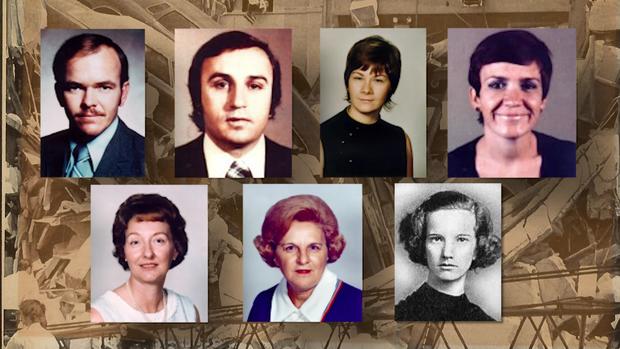John Pistorino, The Man Behind Requiring 40-Year Recertification, Talks Surfside Condo Collapse
MIAMI (CBSMiami) – Special Agent Nickolas Fragos had been assigned to the Miami field office of the DEA for less than three weeks when he arrived for work on the morning of August 5, 1974.
Anna Younger was in her last week with the DEA. In just a few days, the 24-year-old was giving up her secretarial job with the agency to marry her Marine Corp fiancé.
But at 10:22 on that August morning, the DEA office in downtown Miami collapsed, killing Fragos, Younger and five other DEA employees.
"All of a sudden we had this tragic collapse," said John Pistorino, who was an engineering consultant for the county.
He investigated the collapse and helped determine that the seven people died when the parking lot on the roof of the DEA building gave way. And it was out of that tragedy that Pistorino came up with the idea of requiring recertification for buildings after 40 years.
Since the DEA building was approximately 40 years old, he thought that seemed like an appropriate cutoff point.
"That was that was my logic at the time," he said. "If a building was left without proper maintenance and with our [sea] salt environment, our aggressive, heavy salt air environment, it would deteriorate over that period of time. So that was the basis of it."
As investigators work to understand why the Surfside condo collapsed last week, there has been growing focus on the 40-year-year recertification process the building was undergoing. Pistorino has not reviewed any of the records or visited the site and did not want to speak about the cause of the collapse. But he did want to assure the public the 40-year program has been effective.
"I mean, it's been implemented all these all these years," he noted. "I know that some building owners complain, `Why do we have to go through this because our building is fine?' But it's always finds issues with the buildings that require repairs they didn't know about."
"So I think it's worked fine over these years," he continued. "This issue that just came up is the first time we've ever had a building like this collapse."
One question that has emerged is whether the type of inspections that are conducted under the review could detect problems that may be occurring under the building or hidden in its foundation. Pistorino said the inspections can reveal a great deal.
"The first thing, of course, we always start to look at is if there is some evidence of a settlement where something is going on in the foundation," he explained. "If that's happening, then we can see it from above. The concrete will crack in a certain pattern. We call them shear cracks. And even though they're very hairline cracks, an engineer who understands the design of these buildings and who has been involved in the construction can look at these cracks because they make a specific pattern."
Pistorino said there will likely be updates and changes to the recertification process going forward. But he stressed just because there is a 40-year recertification process doesn't mean the owners of the building can ignore problems before then.
"Once again, I want to emphasize you don't wait 40 years before you start looking at these buildings," he said. "They're supposed to be looked at from the day they're built. I get a little frustrated when we have a 40-year recertification. That doesn't mean you just you wait 40 years and all of a sudden you start looking at these kinds of things. That's not the case."




